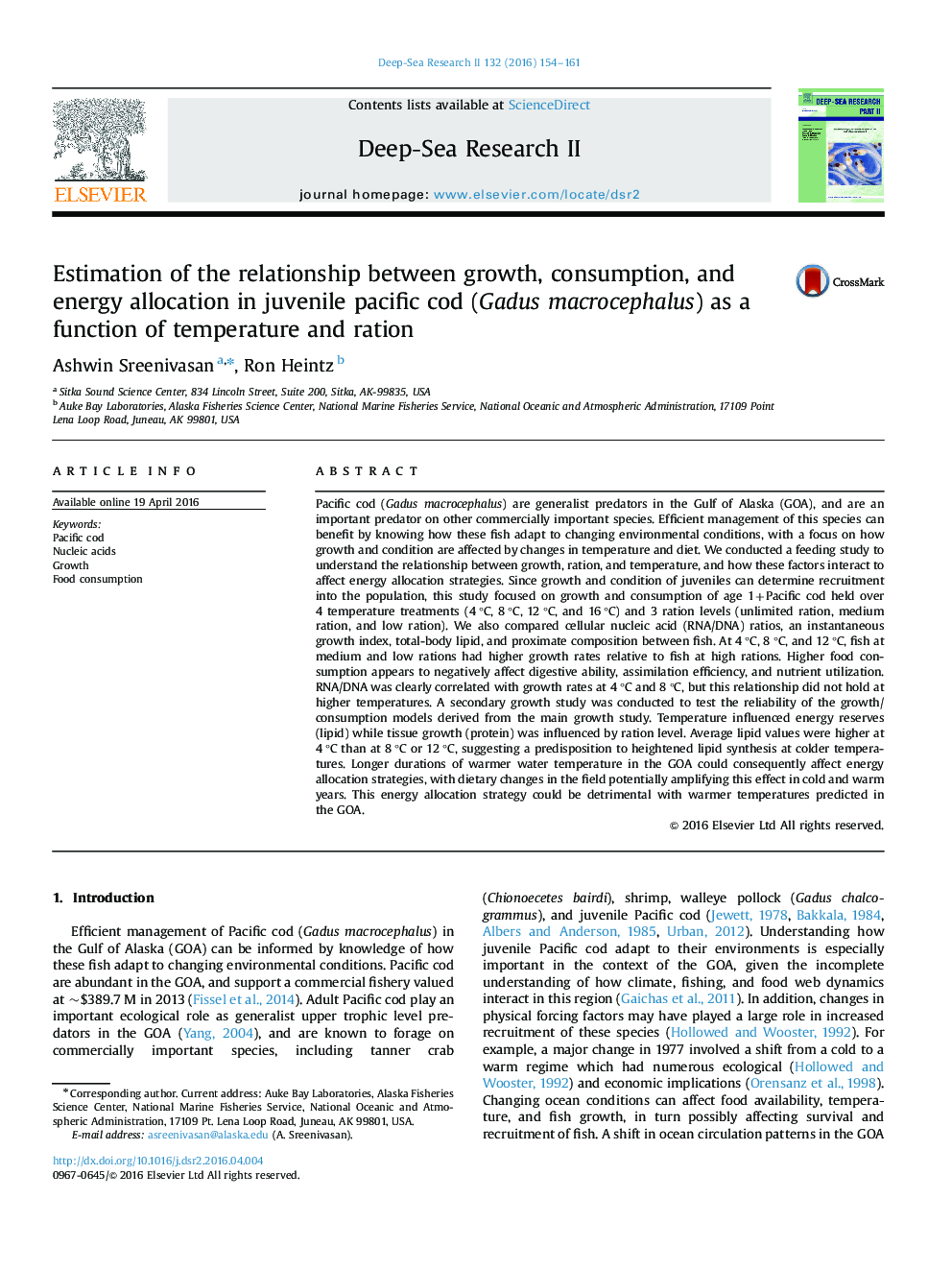| کد مقاله | کد نشریه | سال انتشار | مقاله انگلیسی | نسخه تمام متن |
|---|---|---|---|---|
| 4536086 | 1626410 | 2016 | 8 صفحه PDF | دانلود رایگان |
Pacific cod (Gadus macrocephalus) are generalist predators in the Gulf of Alaska (GOA), and are an important predator on other commercially important species. Efficient management of this species can benefit by knowing how these fish adapt to changing environmental conditions, with a focus on how growth and condition are affected by changes in temperature and diet. We conducted a feeding study to understand the relationship between growth, ration, and temperature, and how these factors interact to affect energy allocation strategies. Since growth and condition of juveniles can determine recruitment into the population, this study focused on growth and consumption of age 1+Pacific cod held over 4 temperature treatments (4 °C, 8 °C, 12 °C, and 16 °C) and 3 ration levels (unlimited ration, medium ration, and low ration). We also compared cellular nucleic acid (RNA/DNA) ratios, an instantaneous growth index, total-body lipid, and proximate composition between fish. At 4 °C, 8 °C, and 12 °C, fish at medium and low rations had higher growth rates relative to fish at high rations. Higher food consumption appears to negatively affect digestive ability, assimilation efficiency, and nutrient utilization. RNA/DNA was clearly correlated with growth rates at 4 °C and 8 °C, but this relationship did not hold at higher temperatures. A secondary growth study was conducted to test the reliability of the growth/consumption models derived from the main growth study. Temperature influenced energy reserves (lipid) while tissue growth (protein) was influenced by ration level. Average lipid values were higher at 4 °C than at 8 °C or 12 °C, suggesting a predisposition to heightened lipid synthesis at colder temperatures. Longer durations of warmer water temperature in the GOA could consequently affect energy allocation strategies, with dietary changes in the field potentially amplifying this effect in cold and warm years. This energy allocation strategy could be detrimental with warmer temperatures predicted in the GOA.
Journal: Deep Sea Research Part II: Topical Studies in Oceanography - Volume 132, October 2016, Pages 154–161
